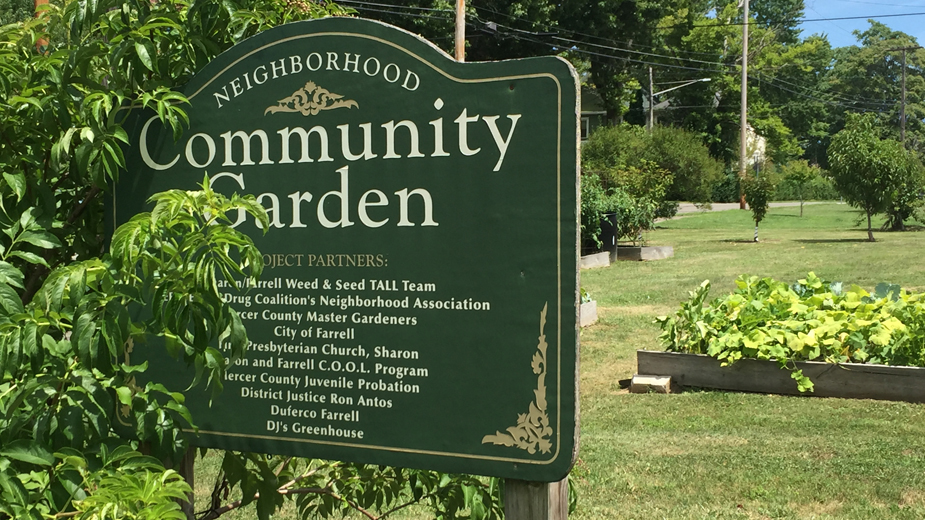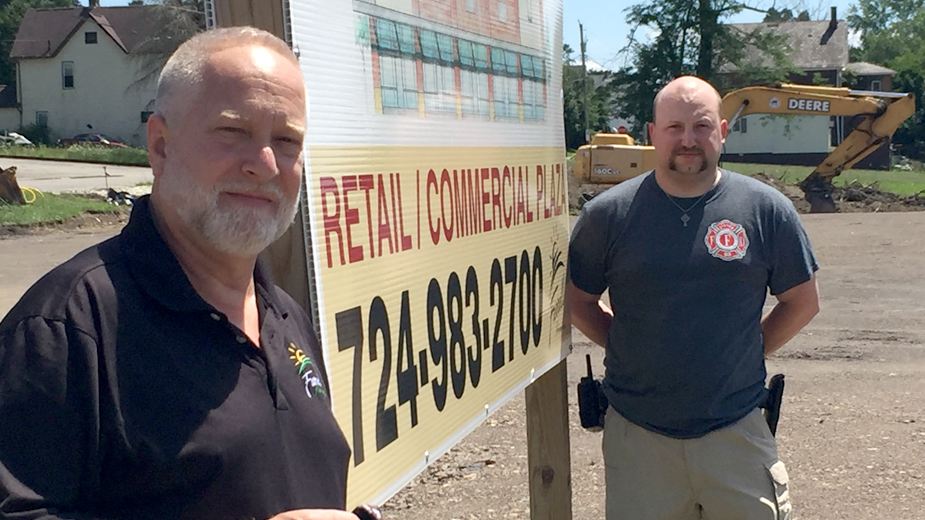Roemer Boulevard is a mile-long thoroughfare that bisects the small town of Farrell, Pa. Churches, schools, residential houses, taverns and other local businesses line each side of the corridor as it slopes westward toward the Shenango River, ending at a junction that in many ways is a living story of industrial America.
The street feeds into the entrance of NLMK Pennsylvania’s steel works – the city’s largest employer – at the intersection of Roemer and what is today Martin Luther King Jr. Boulevard.
For more than 100 years, the site has stood as an eyewitness to the prosperity and perils of the industrial age. It was a subsidiary of The Carnegie Steel Corp. during the first half of the 20th century, became the site of a violent labor strike in 1919, survived the Great Depression and produced the steel vital to Allied victories in World War I and World War II.
Carnegie’s “South Works” was sold to Sharon Steel Corp. in 1945. By the 1970s, Sharon Steel was the 12th-largest steel manufacturer in the country, employing more than 2,000 workers. During the 1980s, the company began to struggle, filed for Chapter 11 bankruptcy in 1987, and was sold in 1992 to a New York investment firm. The operation closed its blast furnaces and was restarted as a much smaller operation, Caparo Steel, during the 1990s, then sold to Duferco Steel and is today owned by Russian steel conglomerate NLMK – a nod to the dynamics of a global economy.
Indeed, the intersection at Roemer and Martin Luther King Jr. Boulevard has seen it all.
While no longer crowded with teeming steel mills or major manufacturers, Roemer and Martin Luther King Jr. boulevards still boast heavy and light industry, as well as small commercial establishments. It’s these areas that Farrell city officials say are the best hopes for new investment and future growth.
“We’re trying to promote development around the corridors,” says Mark Yerskey, director of public works.
One of these opportunities is a tract of vacant land along Martin Luther King Boulevard across from NLMK, Yerskey says. The city is in the beginning stages of transferring the property to Superior Contracting, which envisions developing warehousing and distribution bays there.
The project would consist of a single building that provides private distribution bays that companies could lease, adds David Miklos, owner of Superior. “There are prospects for office and bay space. These are pretty popular now,” he says.
Still, the coronavirus pandemic has placed the project on hold temporarily, Miklos says. “If you had talked to me a year ago at this time, there were a whole lot of things going on. Hopefully, it will happen in the next year or so.”
There were also prospects to redevelop the shuttered American Legion Hall, just next to the site of the proposed distribution center, Miklos notes. That project has stalled because of title issues related to the property. “We’re going to do our best to salvage the deal,” he says.
Miklos envisions both the Martin Luther King and Roemer corridors soon flourishing. Over the years, his company has bought property along both thoroughfares – many of the parcels left vacant from older industrial interests – betting that demand will grow as the local economy diversifies.
“We’ve invested a lot of money,” he says, declining to be specific.
Among the developers who recognize potential in the heavy industrial corridor is John Rademacher, who has developed former manufacturing sites there and has partnered with Superior on the distribution project.
“I was one of the first people active in the corridor, around 1980,” says Rademacher, now retired and living in Colorado.
As the industrial sector crumbled during the decade, he opted to locate his growing construction business there. With the help of a $10,000 façade loan from the city, Rademacher bought the former Sharon Coal and Ice building and began to renovate it. He then used the program to acquire and rehabilitate other aging and dilapidated structures on the corridor and returned them to use.
These projects include a self-service car wash, self-storage units, a former train station that was converted into a party rentals center and a cluster of buildings dubbed “contractor’s square” since they were suitable for construction companies.
“We were hoping it would set the pace for others to come in,” he says.
Perhaps the most appealing project thus far, Rademacher says, was his purchase more than 10 years ago of two abandoned Sharon Steel buildings along the MLK thoroughfare.
Initially, his idea was to bring in a company that produced components for the border fence between Mexico and the United States, which didn’t work out. Then, the idea was to use the buildings to manufacture parts for wind towers. That venture didn’t pan out, either.
Rademacher recalls there was little interest in the old buildings, which he believes date to 1910. That all changed when the Pennsylvania Legislature legalized the use of medical marijuana.
“I got three or four offers during the same week,” Rademacher says, as medical marijuana companies scoured the state looking for locations.
Ultimately, a deal was reached with FarmaceuticalRX, which has since developed a research campus that grows and processes medical marijuana for legal distribution.
“They’ve put several million into the building,” he says. “It’s now one of the best on the block. It’s a huge boost.”
Superior’s Miklos believes that as the heavy and light industrial sector grows along Martin Luther King, it should spur additional interest along Roemer. “As Martin Luther King develops, Roemer will be right behind,” he projects.
There are already signs of improvements along Roemer, says City Manager Ben Prescott. Among the new projects is a small plaza along Roemer designed to attract commercial tenants. The development is unusual in that it is a city-sponsored project, funded by a $500,000 grant from the Pennsylvania Department of Commerce and Economic Development. The 3,000-square-foot structure would be large enough to accommodate three separate units, he says.
“We’d like to turn this into a grocery,” Prescott says. “It would attract all of this central area here.”
Small initiatives such as this are important, as is maintaining the employment base within the city, Prescott says. About 30% of the city’s revenue, for example, is income tax derived from NLMK and UPMC Horizon’s Shenango Valley medical campus on the city’s east side.
Prescott says these major employers “are working their way through” the pandemic. He emphasizes that a recent conversation he had with NLMK executives indicated the plant was still on track to make major improvements and investments there.

Like many other post-industrial towns in the region, Farrell’s population has dwindled. It was never huge – the number of residents peaked at 15,586 in 1920 according to census data – but estimates show that just more than 4,500 live there today. Across the city, however, you’ll find a handful of corner stores, a community garden and a collection of ethnic fraternal halls that are reminiscent of the town’s immigrant heritage.
A priority to boost new development and housing stock is blight removal, says Yerskey, the city’s director of public works. “We’ve been heavily involved in that,” he says.
Since 2015, the city has demolished more than 380 vacant and dilapidated structures, an effort that assistant fire chief Jon Laird says is critical to stabilizing neighborhoods. “When you eliminate blight, you hopefully keep current residents there,” he says.
A companion to blight removal is new housing, Laird says. An initiative underway, called the Affordable Housing Program, allows for eligible buyers to buy a newly constructed house in the city priced, to start, at $72,000 – well below the house’s construction value of $180,000. Four houses have since been built and are occupied. Others are in the planning and development stages.
“For these new houses, we’ve increased the size of the lots,” he says. Traditional lots in the city measured just 25 feet wide and about 125 to 150 feet deep, he says. Now the new lots are built on four parcels and measure 100 feet, he says. “It gives people a little more space.”
Yerskey says that as a small community, Farrell has to make the most with tight budgets and do more with less. “There’s not enough hours in the day,” he says with a laugh.
Pictured: Mark Yerskey is director of public works. Jon Laird is the assistant fire chief.
